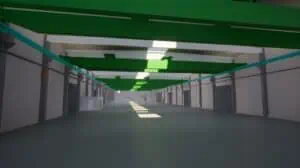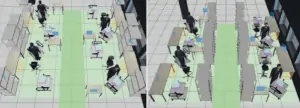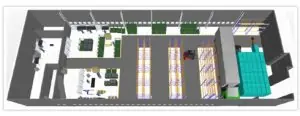What does visual management mean for Fendt as a manufacturer of agricultural machinery in practice and which decisive benefits does the company have from the use of visTABLE® in conjunction with virtual reality (VR)?
The Hohenmölsen location (Saxony-Anhalt) with its more than 450 employees produces parts and components for Fendt tractors, round balers, harvesters and forage wagons. The forage harvester Fendt Katana and the self-propelled crop sprayer Fendt Rogator 600 are manufactured in a further production hall. The Hohenmölsen location is part of the Fendt brand and thus a member of the American AGCO Corporation, a global leader in the manufacture of agricultural machinery.
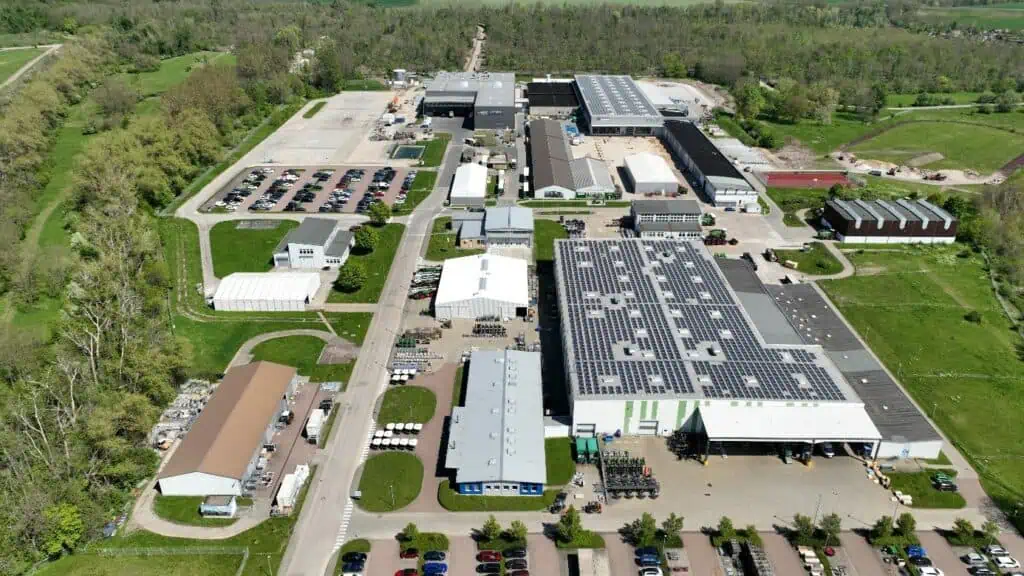
High demand for first-class tractors
The demand for first-class tractors of the Fendt brand has increased significantly in recent years, and thus the production capacities had also to grow. A few general questions emerged in this context:
- How can the projected capacity of the existing factory efficiently be covered?
- By what factor must the existing areas be extended?
- How many machines are additionally required?
Comprehending the structure of the manufacturing matrix
At Hohenmölsen, the factory structure is planned down to the individual workplace. This task is performed by a planning team comprising 10 employees, amongst them employees from production scheduling / technology planning, programming and automation.
The Hohenmölsen location is predominantly characterized by classic cellular manufacturing. To be able to visualize the multifaceted processes in the first step and make them appraisable in a second step, it is paramount to possess solid knowledge of the applied technologies and the resulting work plans. The structure of the manufacture, including all processes, results from SAP and is provided in the form of table views. This information must, however, firstly be edited accordingly to be able to be used for planning.
Planning jointly with a common objective
Within the framework of preparing this objective, a great variety of different systems, such as Excel for creation and evaluation of transport matrices, a sheet of paper with pencil, ranging to complex solutions for simulation were used at the Hohenmölsen location.
“We didn’t have a standardized factory planning. Only visTABLE® enabled us to analyze material flows very quickly and easily, without being required to use complex simulation tools with extensive data exchange.”
Lukas Müller, production planner at AGCO Hohenmölsen GmbH
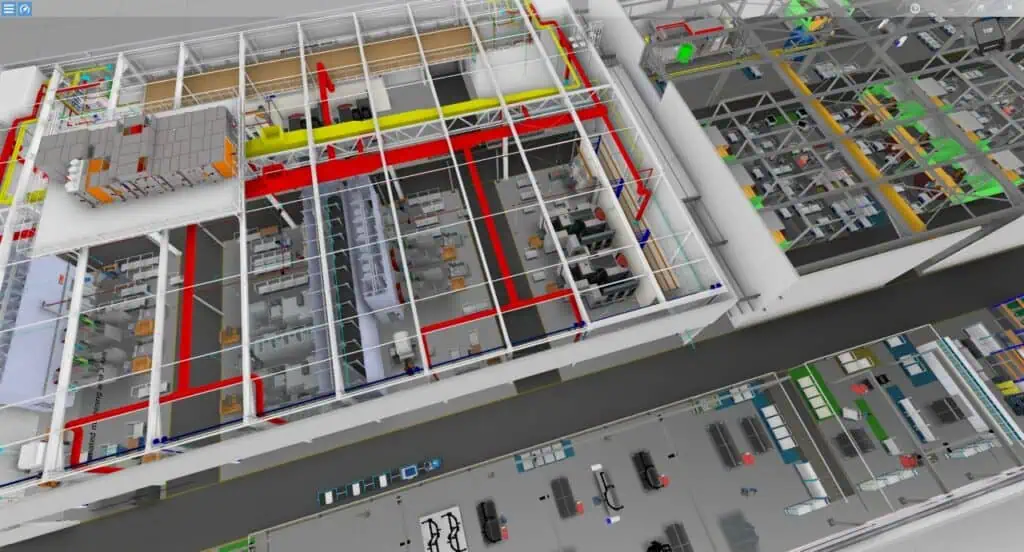
The factory layout is maintained by two employees who use information from the whole team. With visTABLE®, Fendt lives the workshop idea in Hohenmölsen, involving the presentation and discussions of the current status of the layout planning at common meetings. The transport-route-bound Sankey diagram in visTABLE® will also be useful in this conjunction.
“The representations in the form of Sankey and DI diagrams enable us to see extensive transport efforts and possible bottlenecks,”
explains Mr. Müller.
Müller continues: “We as production planners would actually only need a 2D layout with areas and blocks. But it is essential to us to involve employees from the production, and the management. We need comprehensive 3D visualization, and we really found it in visTABLE®.”
Visual management at the Hohenmölsen location of Fendt
3D representation is a tangible contribution to visual management, involving the creation of lucidity and transparency in the appropriate areas, standardized workplaces and the necessity of restructuring the layout. For example, workplaces were installed in full visibility at transport routes. Lines of visibility and shouting distance in the production were also taken into account by the planning team. As a result, the production flow is optimized as exactly as the possibilities for direct exchange between the employees. How is this tested at the Hohenmölsen location?
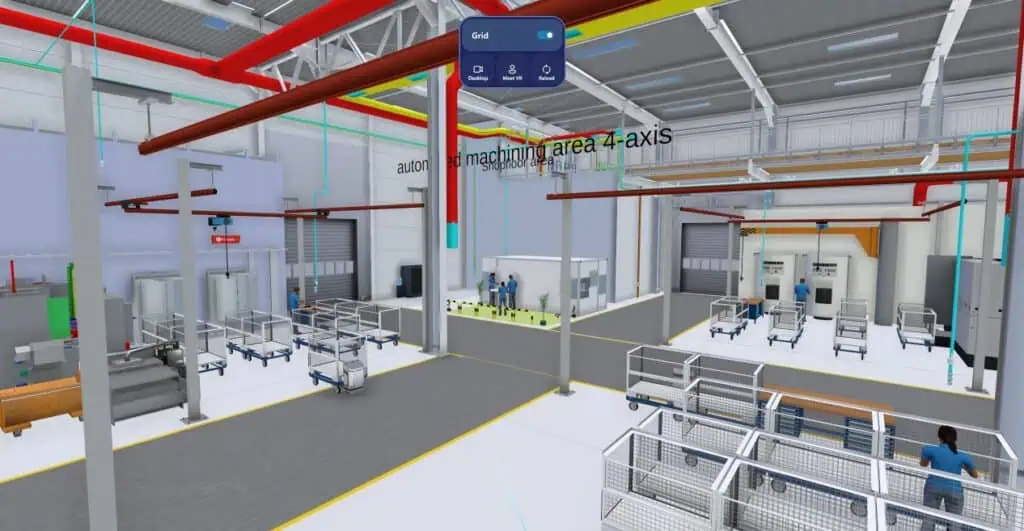
Making planning results tangible by way of virtual reality
The VR visualization of visTABLE® was used within the framework of an international meeting of the production managers in Hohenmölsen to demonstrate the in-house development of the 3D layout-based planning approach at AGCO. Then it was “Headset out” to get to know the planned future by way of a virtual factory tour.
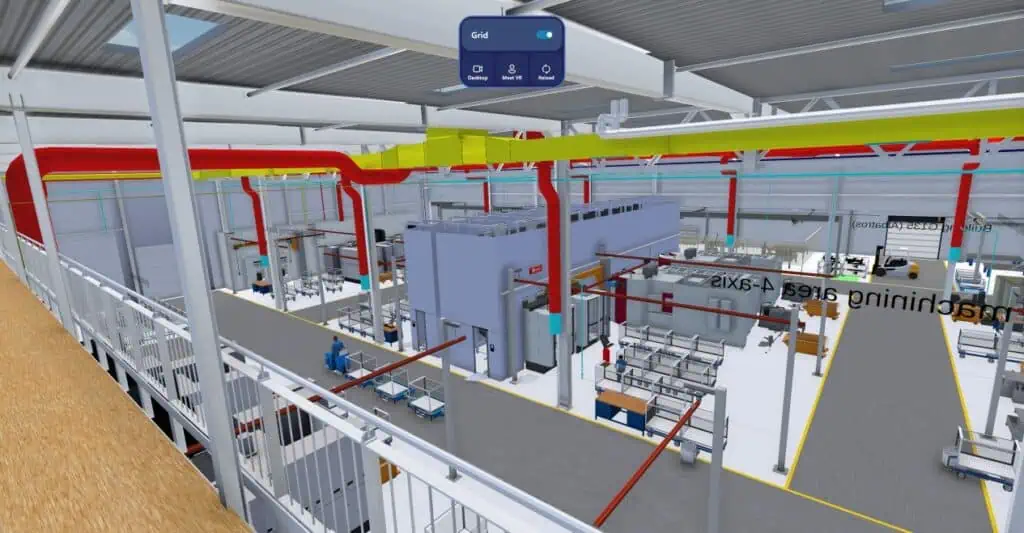
Since the participants of the meeting had already inspected the factory in its current state, it has been possible to put the planned modifications directly in the appropriate context. This works so well in VR because proportions and distances are mapped correctly and the relation to the real production is provided immediately. One of the participants praised: “Now I can imagine how it will look in the future!”
What previously still seemed to be relatively abstract, usually by way of PowerPoint slides, photos and a few KPIs, could now be checked by way of VR headsets close to the reality. Clearances and distances are interpreted intuitively and more effectively in VR which the planners in Hohenmölsen helps to optimize the 3D layout plan in visTABLE®. The aforementioned shouting distance of three meters is thus also directly traceable for everybody. Furthermore, the employees get a very good feeling for their future workplace, including the table height, without the table already existing.
Words of thanks
We, plavis GmbH, thank AGCO Hohenmölsen GmbH for the numerous hints from the practical work with visTABLE® and wish much success in further planning projects.
